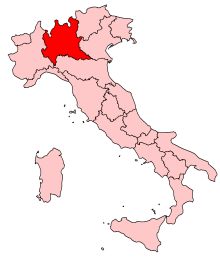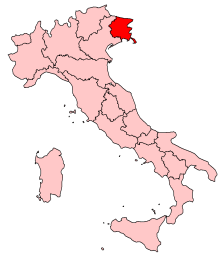
Malvasia is a group of wine grape varieties grown historically in the Mediterranean region, Balearic Islands, Canary Islands and the island of Madeira, but now grown in many of the winemaking regions of the world. In the past, the names Malvasia, Malvazia, and Malmsey have been used interchangeably for Malvasia-based wines; however, in modern oenology, "Malmsey" is now used almost exclusively for a sweet variety of Madeira wine made from the Malvasia grape. Grape varieties in this family include Malvasia bianca, Malvasia di Schierano, Malvasia negra, Malvasia nera, Malvasia nera di Brindisi, Malvasia di Candia aromatica, Malvasia odorosissima, and a number of other varieties.

Sauvignon blanc is a green-skinned grape variety that originates from the city of Bordeaux in France. The grape most likely gets its name from the French words sauvage ("wild") and blanc ("white") due to its early origins as an indigenous grape in South West France. It is possibly a descendant of Savagnin. Sauvignon blanc is planted in many of the world's wine regions, producing a crisp, dry, and refreshing white varietal wine. The grape is also a component of the famous dessert wines from Sauternes and Barsac. Sauvignon blanc is widely cultivated in France, Chile, Romania, Canada, Australia, New Zealand, South Africa, Bulgaria, the states of Oregon, Washington, and California in the US. Some New World Sauvignon blancs, particularly from California, may also be called "Fumé Blanc", a marketing term coined by Robert Mondavi in reference to Pouilly-Fumé.

Barbera is a red Italian wine grape variety that, as of 2000, was the third most-planted red grape variety in Italy. It produces good yields and is known for deep color, full body, low tannins and high levels of acidity.

Chenin blanc is a white wine grape variety from the Loire Valley of France. Its high acidity means it can be used to make varieties from sparkling wines to well-balanced dessert wines, although it can produce very bland, neutral wines if the vine's natural vigor is not controlled. Outside the Loire, it is found in most of the New World wine regions; it is the most widely planted variety in South Africa, where it was historically also known as Steen. The grape may have been one of the first to be grown in South Africa by Jan van Riebeeck in 1655, or it may have come to that country with Huguenots fleeing France after the revocation of the Edict of Nantes in 1685. Chenin blanc was often misidentified in Australia, as well, so tracing its early history in the country is not easy. It may have been introduced in James Busby's collection of 1832, but C. Waterhouse was growing Steen at Highercombe in Houghton, South Australia, by 1862.

Sangiovese is a red Italian wine grape variety that derives its name from the Latin sanguis Jovis, "the blood of Jupiter". Though it is the grape of most of central Italy from Romagna down to Lazio, Campania and Sicily, outside Italy it is most famous as the only component of Brunello di Montalcino and Rosso di Montalcino and the main component of the blends Chianti, Carmignano, Vino Nobile di Montepulciano and Morellino di Scansano, although it can also be used to make varietal wines such as Sangiovese di Romagna and the modern "Super Tuscan" wines like Tignanello.

Verdicchio is a white Italian wine grape variety grown primarily in the Marche region of central Italy. The name Verdicchio derives from verde and refers to the slight green/yellow hue that wines made from the grape can have.
Picolit is a white Italian wine grape grown in the Friuli Venezia Giulia region of northeast Italy. The grape is allowed in the Denominazione di origine controllata e garantita (DOCG) wines of Colli Orientali del Friuli. The grape is most commonly associated with sweet dessert wines often made in the passito style. Historically planted in poor and infertile vineyards, the grape gets its name from the very small stalk, which in friulian language is called pecolèt or pecolùt. The grape had a worldwide reputation in the 18th century when it was featured in royal courts from Great Britain to the Russian Empire. While experiencing cult wine popularity in the 1960s & 1970s, Picolit's extremely small yields have made it economically difficult to grow and has limited the number of plantings.
Breganze is a town in the province of Vicenza, Veneto, Italy. It is northeast of Via Romea. During World War II, the Germans were on one side of the river and the Allies were on the other, and a firefight occurred across the river.

Aleatico is a red Italian wine grape variety. It is notable for being the primary grape in the cult wine Aleatico di Portoferraio made in Elba. In Chile is known as Red Moscatel. The grape has also been cultivated at Mudgee in New South Wales and California.

Straw wine, or raisin wine, is a wine made from grapes that have been dried off the vine to concentrate their juice. Under the classic method, after a careful hand harvest, selected bunches of ripe grapes will be laid out on mats in full sun.. This drying will probably be done on well exposed terraces somewhere near the wine press and the drying process will take around a week or longer. Small scale productions were laid out on flat roofs; however, if this still happens, it is extremely rare nowadays.

Lombardia (Lombardy) wine is the Italian wine produced in the Lombardy region of north central Italy. The region is known particularly for its sparkling wines made in the Franciacorta and Oltrepò Pavese areas. Lombardy also produces still red, white and rosé wines made from a variety of local and international grapes, including Nebbiolo wines in the Valtellina region and Trebbiano di Lugana white wines produced with the Chiaretto style rosé along the shores of Lake Garda. The wine region currently has 22 Denominazione di origine controllata (DOC), 5 Denominazione di Origine Controllata e Garantita (DOCG) and at least 13 Indicazione Geografica Tipica (IGT) designations. The main cities of the region are Milan, Bergamo and Brescia. The region annually produces around 1.3 million hectolitres of wine, more than the regions of Friuli-Venezia Giulia, Marche, Trentino-Alto Adige/Südtirol and Umbria.
Greco is an Italian wine grape that may be of Greek origin. The name relates to both white (Greco bianco) and black (Greco nero) grape varieties. While there is more land area dedicated to Greco nero, the Greco bianco is the grape most commonly referred to by "Greco". In the Campania region it is used to produce the Denominazione di Origine Controllata e Garantita (DOCG) wine Greco di Tufo. In Calabria, it is used to make the Denominazione di Origine Controllata (DOC) wine Greco di Bianco. The name "Greco" is sometimes used as a synonym for several varieties of supposed Greek origins-most notably Trebbiano.

Friuli-Venezia Giulia wine is wine made in the northeastern Italian region of Friuli-Venezia Giulia. There are 11 Denominazione di origine controllata (DOC) and 3 Denominazione di Origine Controllata e Garantita (DOCG) in the Friuli-Venezia Giulia area. The region has 3 Indicazione Geografica Tipica (IGT) designations Alto Livenza, delle Venezie and Venezia Giulia. Nearly 62% of the wine produced in the region falls under a DOC designation. The area is known predominantly for its white wines which are considered some of the best examples of Italian wine in that style. Along with the Veneto and Trentino-Alto Adige/Südtirol, the Friuli-Venezia Giulia forms the Tre Venezie wine region which ranks with Tuscany and Piedmont as Italy's world class wine regions.
Verduzzo is a white Italian wine grape grown predominantly in the Friuli-Venezia Giulia region of northeast Italy. It is also found in significant plantings in the Piave Denominazione di origine controllata (DOC) of the Veneto region, though some of these plantings may be of the separate Verduzzo Trevigiano variety. Verduzzo Friulano is used in varietal and blended wines, many of which fall under DOC as well as vino da tavola designations, that range in style from dry to late harvest wines. According to wine expert Oz Clarke, most of the sweeter examples of Verduzzo can be found in the Friuli-Venezia Giulia with the grape being used for progressively drier styles of the wine the further west into the Veneto.

Arneis is a white Italian wine grape variety originating from Piedmont, Italy. It is most commonly found in the hills of the Roero, northwest of Alba, where it is part of the white Denominazione di Origine Controllata e Garantita (DOCG) wines of Roero. It can also be used to produce DOC wines in Langhe. Arneis is so called because it is regarded as a somewhat difficult variety to grow. It is a crisp and floral varietal, and has been grown for centuries in the region. The white wines made from the Arneis grape tend to be dry and full bodied with notes of pears and apricots.

Moscato Giallo or Yellow Muscat is a white Italian wine grape variety that is a member of the Muscat family of grapes. Known for its large deep cluster of loose, deep-yellow berries and golden colored wine, Moscato Giallo is grown mostly in northern Italy where it is most often used to produce passito style dessert wines. The grape is also planted in Croatia where it is known as Muškat žuti.
Verdea is a white Italian wine grape variety that originated in Tuscany but is today mainly grown in the Lombardy wine region of northern Italy. The grape is sometimes confused with the white Verdeca grape of the Apulia region and the French wine grape Verdesse from Savoy due to similarities in their names and synonyms. Verdea can be used to make a wide variety of wines, ranging from the late harvested Vin Santo to dry sparkling wines.

Nosiola is a white Italian wine grape variety that is grown in the Trentino region north of Lake Garda in the Valle dei Laghi. Here it is used in varietal Denominazione di origine controllata (DOC) wines and as a blending component in wines such as Sorni Bianco from Trento. It is also used to produce a dessert wine in the Vin Santo style from grapes that have been allowed to dry out prior to fermentation.
Marzemina bianca is a white Italian wine grape variety that is grown in the Veneto region of northeastern Italy. Ampelographers believe that the grape is a natural crossing of the Trentino wine grape Marzemino and the Soave wine grape Garganega. This parent-offspring relationship between Marzemina bianca and Marzemino makes the variety distinct from grapes like Pinot blanc and Grenache blanc which are other color mutations of Pinot noir and Grenache, respectively. DNA analysis has confirmed that the Veneto grape Raboso Veronese is the offspring of Marzemina bianca and Raboso Piave.
Mantonico bianco is a white Italian wine grape variety grown in the Calabria wine region of southern Italy. The grape should not be confused with the similarly named Calabrian grape Montonico bianco or with Guardavalle, which is known as Mantonico in the province of Cosenza in Calabria. In the early 21st century, DNA profiling suggested that Mantonico bianco may be one of the parent varieties of the red Calabrian grape Gaglioppo which is also known as Mantonico nero.















